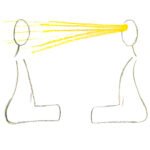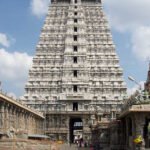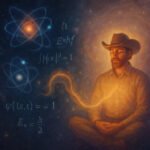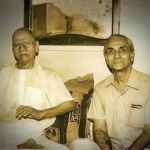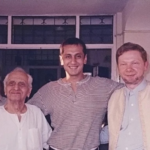April 23, 2018
Maharaj and the Trojan Horse of Conscious Presence
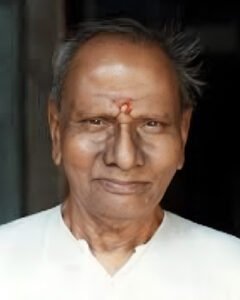
Trojan Horse of Conscious Presence
Over hundreds of years, in various spiritual traditions and teachings across different cultures, the ego has been portrayed as a villain – the source of all one’s troubles. Many of these teachings tell us that the ego must be killed. My spiritual teacher Ramesh Balsekar, however, did not share this view. He used to ask, ‘Who is being told to kill the ego? Who else, but the ego! And would the ego ever agree to kill itself?’
To tell the ego to kill itself is akin to ‘making the arsonist in charge of the fire engines’.
Ramesh would further elaborate that the ego was a necessity for inter-human relationships to develop, and for life as we know it to happen. His teaching would then proceed with asking the individual, the ‘ego’, to perform a simple practice that he referred to as self-investigation. In this investigation, one explored whether one’s actions were truly one’s own actions, or were dependent on a multitude of factors over which one had no control. This aspect of his teaching is covered in most of his books.
Ramesh’s guru Nisargadatta Maharaj’s approach was quite different. Whenever visitors would ask questions of Maharaj, he would pre-empt them by saying: ‘Don’t ask questions as one individual to another, but as consciousness to consciousness.’ This posed a conundrum for some spiritual seekers. For, what questions would be left if they couldn’t ask them from the standpoint of the ego – the individual ‘me’? All problems in life are after all related to one’s hopes, desires, dreams, fears, failures, and so on. If one was not an ‘individual’ with one’s own personal story, then where would the question of problems arise?
Maharaj’s teaching was based on the concept that ‘you are not the body’. He would keep telling those who visited him, to turn their attention inward to the animating presence – ‘I am’. This ‘conscious presence’ is that without which one would not ‘be’. Without this presence of consciousness, the body would be lifeless.
Ramesh, on the other hand, would say that this ‘I am’ is the only Truth that no one can deny. For no one can deny that they exist. He would refer to it as an ‘impersonal awareness of being’. Impersonal, for if one’s entire memory were wiped out, one would yet be aware that one exists. It is this awareness that gets personalised with the advent of the ego when a child reaches the age of 1½ to 2 years. ‘I am’ is the impersonal presence, and ‘I am Gautam’ is the ego – identified with a name and form.
To give an example that might make this easier to understand, one can see that this impersonal awareness – the ‘I am’ – is that which witnesses the march of time as one clocks more birthdays and grows older. ‘I am 20; I am 30; I am 40…’ Who is this ‘I am’ that knows these milestones? It is obviously something that is apart from the body, which knows the body is that respective age. In other words, it cannot be its own age, else it would not know it.
As Ramesh, quoting Wei Wu Wei, once said: ‘How can we know that the world is transitory, that time is passing, that nothing stands still? We cannot know that the river is flowing unless we have one foot on the bank! There is no entity, only a continuum. And that continuum is Consciousness.’
Maharaj would urge some seekers to ‘abide in your beingness’. For those of a simpler mindset who probably would not comprehend that message, he would recommend bhajans and japa. On some occasions, he would even suggest the practice of simple affirmations or reflections.
I chanced upon these affirmations when I started reading Maharaj’s books. Somehow the affirmations stood out as they were quite unexpected of Maharaj.
The dictionary defines an affirmation as, ‘a positive statement or declaration of the truth or existence of something’. And Maharaj’s affirmations were literally just that, for they kept affirming ‘the only truth that no one can deny’ – ‘I am, I exist.’ I exist not as a separate individual – ‘I am Gautam’ – but as That which enables me to say ‘I am Gautam’.
In the Tibetan course of breathing exercises that I practised, one of the affirmations was, ‘The riddle of the universe is about me, and I am now solving it.’ This was astonishingly close to Maharaj’s teachings and what he often said: ‘Abide in the beingness, the I Amness, and it will reveal its secrets to you.’ Maharaj was pointing to That which is even prior to beingness, ‘before you were born,’ as he would say. To emphasise the point, he would sometimes say, ‘What were you a 100 years before you were born?’
But that’s quite another matter.
Some may find these affirmations rather simple. However, they are deceptive in their simplicity, as are all the great wisdom teachings. Ramesh would say, ‘Always remember, beauty in simplicity.’
I remember the day I went to Ramesh with the manuscript of my first book based on his teaching, which covered its core concepts. It was short and concise; perhaps too short. I wasn’t surprised when, after going through it, he remarked that it could have been longer. When I said I could work at it and elaborate on his teaching, he answered, ‘No no, simple is good. That’s the way the teaching went in, so that’s the way it came out!’ For a minute I thought he was joking, but he said it in all seriousness. I thought it was ‘either that, or he must think I have a very basic level of intellect’. He must have noticed my expression for, with a chuckle, he quickly added, ‘If it was thicker, we could have charged more!’
Maharaj’s affirmations and reflections are like the Trojan Horse1. They come disguised as a wonderful gift for the ego that is stealthily brought within its ramparts. Although disguised as a gift, hidden within are warriors ready to strike at the heart of the ego and its identification with name and form as a separate entity, as distinct from the ‘other’. While these affirmations are few and far between in Maharaj’s books (and, therefore, his talks), what they all have in common is that Maharaj says with firm conviction that they will ‘take you to that state’. Maharaj did not suggest that seekers simply repeat ‘I am not the body’, even though that was his basic message. He knew only too well that to suggest a negative affirmation (negation) such as ‘I am not the body’ would not work.
After all, as Ramesh would say, the ego is the separate individual, the ‘identification with name and form as a separate entity’. Such an affirmation, so to speak, would not really make any headway. It would not penetrate the depths of one’s being. The natural programming the ego has been endowed with is that it is very much identified with the body and hard-wired with it – just like the shell on a turtle’s back. Therefore, the ego would put up resistance – consciously or unconsciously – to negating itself into oblivion. It would jeopardise the process, for the arsonist would be given charge of the fire engines; the thief would be given charge of the police station.
However, though they are affirmations, they operate as covert negations. What they affirm is the pristine, impersonal sense of presence untouched by the acrobatics of the ‘me’. And by doing so, what they negate is the existence of the individual, the ‘me’, as separate from others. Maharaj was clear that he had to demolish the individual’s identification with the body. Instead of pitting the ego against the ego, what Maharaj suggested was affirmations that embraced the ego; affirmations that the ego would have no problem in affirming. This is the approach he took with some seekers.
It’s important to note that these affirmations and reflections do not need to be memorised and recited in a punishing routine. It is the ego, the ‘thinking mind’, that does this in the hope of deriving some future benefit. Whenever they arise in consciousness, that is fine. When they don’t, so be it. They may be remembered or they may be forgotten, and come up whenever they do. These affirmations – at their heart – are not addressing the individual in any capacity, so it really doesn’t matter.
What can this affirmation give me? What can it do for me? The answer is found to be ‘nothing’. And then the ego gradually loosens its grip. For, what use does the ego have of something from which it cannot derive its sense of self from, or cannot add to itself?
For some seekers, reading them just once would be enough and then the affirmations would naturally arise whenever they are supposed to. For others with a more disciplined approach, they could write them down and place them by their bedside to read every night. It really does not matter as long as it is done according to one’s natural inclination. Slowly but surely, they would sink in deeper and deeper. Maharaj would often say: ‘My concepts, if implanted in you, will destroy all other words and concepts.’
This statement of Maharaj is the real joker in the pack, the mother of all Trojan horses if you will. The very fact that you heard or read the affirmation meant that it has already been accepted by your awareness, as it arose in it. To put it more accurately, it has appeared within awareness and, therefore, that itself is the acceptance of it. Therefore, if ‘you’ choose to reject the affirmation and laugh it off, it is already too late as the seed has already been planted. Besides, awareness does not reject anything. What would the awareness of existence reject? The rejection is by a separate ‘me’ with its judgements and dislikes. But, as far as Maharaj was concerned, the game was already over. The battle was won before it was even fought!
I was pleasantly surprised (and found it to be a validation of what I felt, even though it was not required) to read much later on that Maharaj said: ‘You don’t need to worry. My teachings are already planted in your heart. They will sprout in due course. Simply have faith. There is no need to worry.’2
However, it must be noted that by saying that the affirmation will arise whenever it is supposed to, it does not mean it will arise only as a string of words – spoken or unspoken. That might happen initially, but soon it is found that it arises as the Understanding, and such arising can take place spontaneously or in response to a particular situation. Over time one will stabilise in that as the ground of one’s being, instead of the habitually conditioned reaction of the ego to various situations it encounters in daily living.
Another point that must be noted is that failure in this approach is impossible. At a mundane level, if one was affirming for a dream home, relationship, and so on, one might not get what one desired even though one had been sincere in one’s practice. This could lead to tremendous frustration at the failure to manifest one’s desire through the process of affirmations. On the flip side, you may have the desire fulfilled for whatever it is that you have affirmed, but that very object could turn out to be something which makes you feel miserable later.
With Maharaj’s affirmations there is nothing you are adding to yourself, be it in terms of material objects, relationships with others, and so on. Rather, it is a process of stripping away; of subtraction, so that the ‘real you’ shines forth in all its glory. It reminds me of Antoine de Saint-Exupéry’s famous quote, ‘Perfection is not when nothing more can be added, but when nothing more can be taken away.’
What’s more, the affirmation reiterates what one already is; not what one wants to become but affirms it in the present tense in order to make it manifest. For example, if one wants to be in a loving relationship with a partner, some new age teachings would suggest an affirmation like: ‘I am in a loving relationship at this moment.’ With the power of the affirmation and visualisation, the result would supposedly manifest if practiced in the prescribed method.
With Maharaj’s affirmations, it is like taking an exam in which you simply cannot fail. As mentioned earlier, the dictionary definition of ‘affirmation’ is ‘a declaration of the truth or existence of something’. What could be closer to this than ‘I am’?
The meaning of the Mahavakyas – the great sentences of Advaita Vedanta – is meant to be realised through direct experience. As far as Maharaj was concerned, it was already everyone’s direct experience that they ‘are’. His teachings were completely aligned with the scriptures even though he suggested not reading the scriptures at an intellectual level in order to garner theoretical knowledge, but rather to enquire into the nature of one’s own ‘beingness’ for true knowledge to dawn.
It is clearly noticed that for some of the affirmations and reflections given below, Maharaj suggested that they be said preferably before sleeping. This is because at the end of the day, when the thinking mind recedes into the background as one enters the ‘sleeping zone’, a lesser resistance is put up by the separate ‘me’ to the statement being affirmed. These affirmations and reflections would, in fact, even help the thinking mind to quieten down, thus enabling a good night’s sleep.
Other affirmations are to be done in the waking state. Again, ‘done’ is not really the apt word for they naturally arise whenever they are supposed to, bringing much peace and lightness to a situation, moreso to a stressful one. Whatever is ‘done’ is done by the separate ‘me’ and none of these affirmations can be ‘done’ as such, as they don’t involve the ‘me’ but point back to the ‘I am’, the conscious presence in which everything that goes on in our lives arises and into which everything dissolves.
What a relief this approach is. You simply cannot fail, and this point cannot be reiterated enough.
Talking of failure reminds me of a conversation I had a few years ago with a doctor from Australia. He mentioned how one of his patients, who was at an advanced stage of cancer, enrolled for a course in ‘attracting abundance and positivity in one’s life’. He had been interviewed prior to enrolling and the assessment was that the course would have a positive effect on his health. He was quite convinced with the presentation made by the course facilitators, especially when he was told that he could be on his way to recovery if he followed the practice. However, even though he was diligent with all the practices that were prescribed, his condition only kept getting worse. As he was nearing the end of his days, he asked the course facilitators why things hadn’t worked out as he hadn’t improved. To this they replied that he was not visualising and affirming good health with all his heart.
Hearing this, I said, ‘If someone facing death did not affirm good health with all his heart, I don’t know who would!’ The doctor nodded in agreement saying that was exactly his response. This lad passed away with a load of guilt for not wishing ‘from his heart’ to get better. He would have died a more peaceful death as a natural result of his illness, instead of with the stigma of being a failure slapped on him during his last days, and burdened with the guilt of not having been sincere enough to save himself.
Maharaj’s affirmations point directly to the heart of existence. They are not addressed to the mind – the ‘thinking mind’ of the ego. There is no question of not putting one’s heart into them.
Here are Maharaj’s affirmations in all their pristine purity. They have a sutra-like quality and take the form of simple statements or reflections. Before the statement, or after it, comes a sentence or two as spoken by Maharaj, which I have included so that they are read in the context of what he was suggesting.

‘I am luminous, I am like ether, I am formless, pure and bodiless.’
This should be your intense and speechless meditation every day – before going to sleep at least. And in course of time you will certainly attain to the state. This is what your Guru says: do not forget it.3

‘I am without a body and everything is perceived through my own light.’ This must be firmly established within.4

Make the mind i.e. prana say, ‘My true nature is indestructible and eternal.’
The mind will disappear; there will be the manifest Brahman Itself (thoughts disappear and pure Consciousness shines).5

Without pronouncing words, say, ‘I am formless, desireless and pure as space. My sense ‘I am’ is of the nature of God.’6

‘Many impure thoughts have come and gone away, but I am immutable, I am infinite, I am the Truth.’
Sleep with these thoughts and all those impure thoughts are absolved.7

‘It is only because I am, that I see the world and think of God; therefore God is because I am. If I am not, God is not.’
I will give you a formula which will do everything for you: Think continuously in terms of ‘I am God; there is no God without me.’ When you are firmly established in this, whatever is unimportant will gradually fall away.
A step further: I have told you to say ‘I am God’, but now what I am getting at is not just the words ‘I am God’ but that which was prior to the understanding of the words. That is God and that is you, not the words.
The postman comes here to deliver the mail. He may be a small man but he is fully aware that he represents the government. My feeling that I am, is the registration of the presence of God.8
![]()
Let me gladden your hearts by giving you a couple of tips. In spite of whatever I say, I know you will continue on your ‘self-improvement’ course and keep looking for tips…
1. Make it a habit to think and speak in the passive tense. Instead of ‘I see something’ or ‘I hear something’, why not think in the passive way: ‘Something is seen’ or ‘Something is heard’? The perception will then not be on the basis of an action by the phenomenal entity but on the basis of an event or occurrence. In due course, the pseudo-entity ‘I’ will recede into the background.
2. Before going to sleep at night, spend about 10 minutes sitting relaxed both in body and mind, taking your stand that ‘you’ are not the body-mind construct but the animating consciousness, so this idea will impregnate your being throughout the period of your sleep.9

I’ll tell you only one thing… Go on humming ‘I am’ without words, the unstruck sound.10
——–
End Notes:
1. The Trojan Horse was the deception that the Greeks employed to enter the city of Troy and gain victory over the Trojans after a fruitless ten-year siege. The Greeks constructed a huge wooden horse in which they hid a select force of warriors inside and left the ‘gift’ of the wooden horse outside the city gates. While the Greeks pretended to sail away, the Trojans pulled the horse into their walled city as a victory trophy. That night the Greek force crept out of the horse and opened the gates for the rest of the Greek army which had sailed back under the cover of night. The Greeks entered and destroyed the city of Troy, thus decisively ending the war.
Metaphorically speaking, a ‘Trojan Horse’ has come to mean any trick or deception employed that causes a target to invite an enemy into a securely protected bastion.
2. The Last Days of Nisargadatta Maharaj – S. K. Mullarpattan, Yogi Impressions Books Pvt. Ltd., Mumbai, 2006.
3. Self-knowledge and Self Realisation – Nisargadatta Maharaj, Shree Nisargadatta Ashram, Khetwadi, Bombay, 1963.
4. Meditations with Sri Nisargadatta Maharaj, Yogi Impressions Books Pvt. Ltd., Mumbai, 2014, p. 47.
5. Ibid., p. 115.
6. Ibid., p. 142.
7. Seeds of Consciousness – Nisargadatta Maharaj, Chetana Pvt. Ltd., 1997.
8. Seeds of Consciousness – Nisargadatta Maharaj, Chetana Pvt. Ltd., 1997.
9. Pointers from Nisargadatta Maharaj, Chetana Pvt. Ltd., 1996.
10. Seeds of Consciousness – Nisargadatta Maharaj, Chetana Pvt. Ltd., 1997.
This essay is from the book The End of Separation, by Gautam Sachdeva
 Nothing and the Centaur
Nothing and the Centaur Guest Blog – Arunachala Girivalam by Vikrant Rawa
Guest Blog – Arunachala Girivalam by Vikrant RawaMarch 8, 2024
 Guest Blog – The Light of the Guru by Priya Tandon
Guest Blog – The Light of the Guru by Priya TandonOctober 1, 2024

 On The Occasion of Guru Purnima 2025
On The Occasion of Guru Purnima 2025July 28, 2025


 The End of Duality
The End of DualitySeptember 20, 2020
 Advaita and the Energy Body
Advaita and the Energy BodySeptember 14, 2020
 True Apperception
True ApperceptionApril 25, 2019

 The World’s Best Astrologer
The World’s Best AstrologerSeptember 7, 2018
 Nisargadatta and the funeral of death
Nisargadatta and the funeral of deathSeptember 3, 2018
 Ramesh Balsekar – Destiny’s child is 90
Ramesh Balsekar – Destiny’s child is 90May 3, 2018

 Aspects of the Mind and the Arrows of Destiny
Aspects of the Mind and the Arrows of DestinyAugust 11, 2015
 Consciousness and the Fenix
Consciousness and the FenixNovember 17, 2011
 Consciousness and the Now
Consciousness and the NowFebruary 2, 2011
 A Double-edged Sword
A Double-edged SwordJuly 3, 2010
 Spending no time with Eckhart Tolle
Spending no time with Eckhart TolleApril 3, 2010


